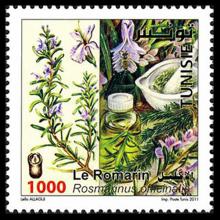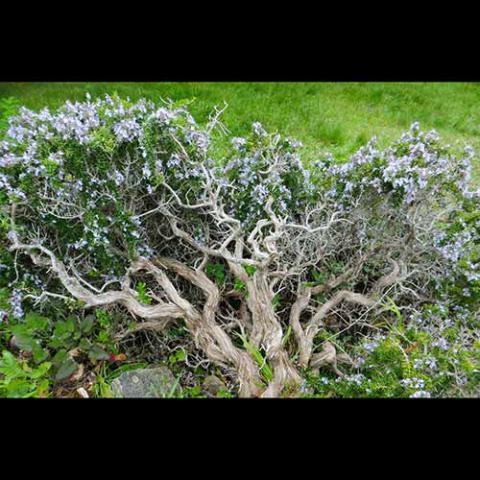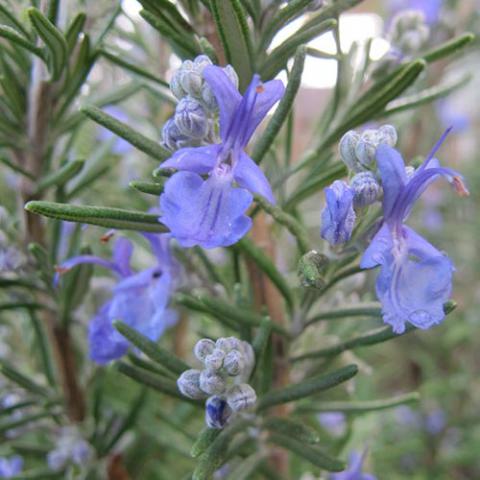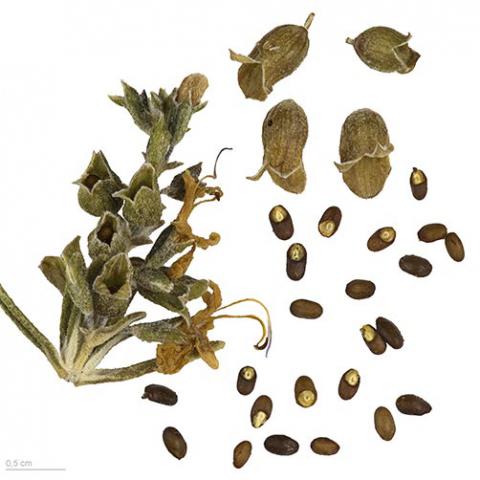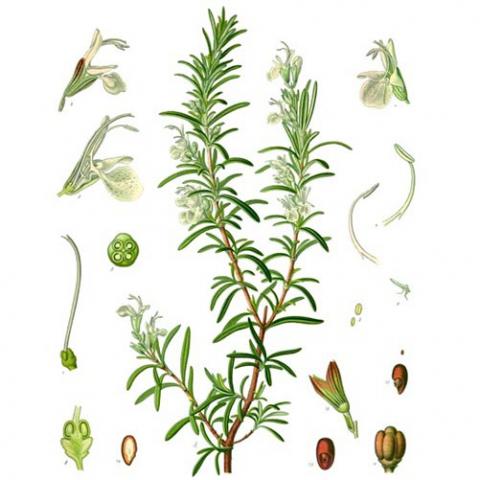NAME(S)
TAXONOMY
PLANTAE ID
THERAPEUTIC
Tunisia
Issued:
Stamp:
Salvia rosmarinus
Tunisia
Issued:
Stamp:
Salvia rosmarinus
Tunisia
Issued:
Stamp:
Salvia rosmarinus
Genus species (Plantae): Salvia rosmarinus
Salvia rosmarinus, commonly known as rosemary, is a shrub with fragrant, evergreen, needle-like leaves and white, pink, purple, or blue flowers, native to the Mediterranean region. Until 2017, it was known by the scientific name Rosmarinus officinalis, now a synonym.
It is a member of the mint family Lamiaceae, which includes many other medicinal and culinary herbs. The name "rosemary" derives from Latin ros marinus ("dew of the sea"). The plant is also sometimes called anthos, from the ancient Greek word ἄνθος, meaning "flower". Rosemary has a fibrous root system.
Description
Rosemary is an aromatic evergreen shrub with leaves similar to hemlock needles. It is native to the Mediterranean and Asia, but is reasonably hardy in cool climates. It can withstand droughts, surviving a severe lack of water for lengthy periods. In some parts of the world, it is considered a potentially invasive species. The seeds are often difficult to start, with a low germination rate and relatively slow growth, but the plant can live as long as 30 years.
Forms range from upright to trailing; the upright forms can reach 1.5 m (4 ft 11 in) tall, rarely 2 m (6 ft 7 in). The leaves are evergreen, 2–4 cm (3⁄4–1 1⁄2 in) long and 2–5 mm broad, green above, and white below, with dense, short, woolly hair.
The plant flowers in spring and summer in temperate climates, but the plants can be in constant bloom in warm climates; flowers are white, pink, purple or deep blue. Rosemary also has a tendency to flower outside its normal flowering season; it has been known to flower as late as early December, and as early as mid-February (in the northern hemisphere).
Taxonomy
Salvia rosmarinus is now considered one of many hundreds of species in the genus Salvia. Formerly it was placed in a much smaller genus, Rosmarinus, which contained only two to four species including R. officinalis, which is now considered a synonym of S. rosmarinus. The other species most often recognized is the closely related, Salvia jordanii (formerly Rosmarinus eriocalyx), of the Maghreb of Africa and Iberia.
The name of ros marinus is the plant's ancient name in classical Latin. Elizabeth Kent noted in her Flora Domestica (1823), "The botanical name of this plant is compounded of two Latin words, signifying Sea-dew; and indeed Rosemary thrives best by the sea." Both the original and current genus names of the species were applied by the 18th-century naturalist and founding taxonomist Carl Linnaeus.
Usage
Upon cultivation, the leaves, twigs, and flowering apices are extracted for use.[18] Rosemary is used as a decorative plant in gardens. The leaves are used to flavor various foods, such as stuffing and roast meats.
Cultivation Since it is attractive and drought-tolerant, rosemary is used as an ornamental plant in gardens and for xeriscape landscaping, especially in regions of Mediterranean climate. It is considered easy to grow and pest-resistant. Rosemary can grow quite large and retain attractiveness for many years, can be pruned into formal shapes and low hedges, and has been used for topiary. It is easily grown in pots. The groundcover cultivars spread widely, with a dense and durable texture.
Rosemary grows on loam soil with good drainage in an open, sunny position. It will not withstand waterlogging and some varieties are susceptible to frost. It grows best in neutral to alkaline conditions (pH 7–7.8) with average fertility. It can be propagated from an existing plant by clipping a shoot (from a soft new growth) 10–15 cm (4–6 in) long, stripping a few leaves from the bottom, and planting it directly into soil.
Reference: Wikipedia,Plants for a Future
Photos: www.amazingherbgarden.com, Köhlers Medizinal-Pflanzen

